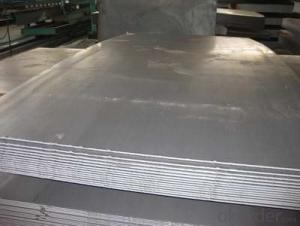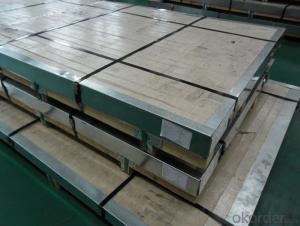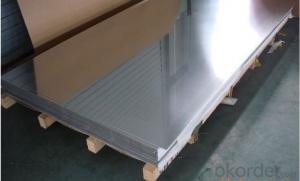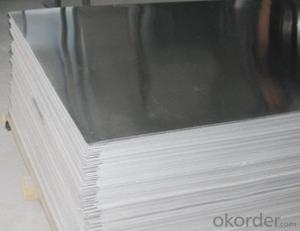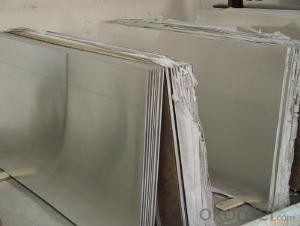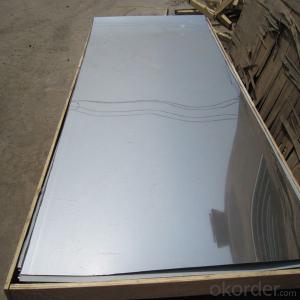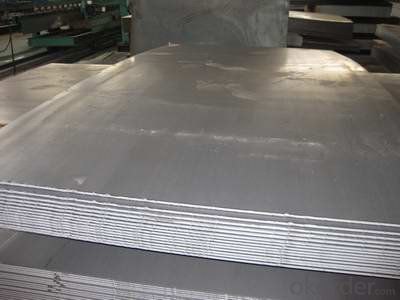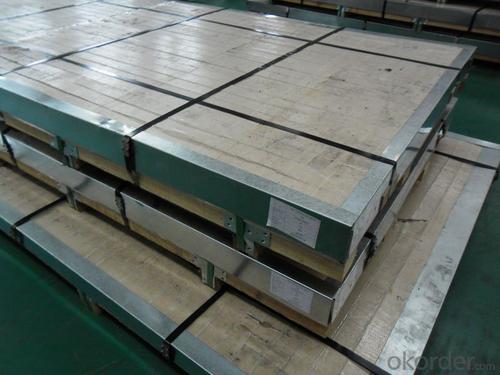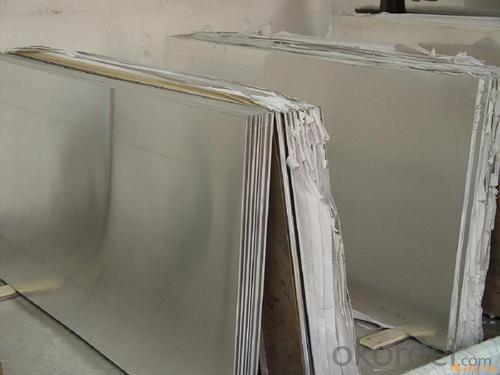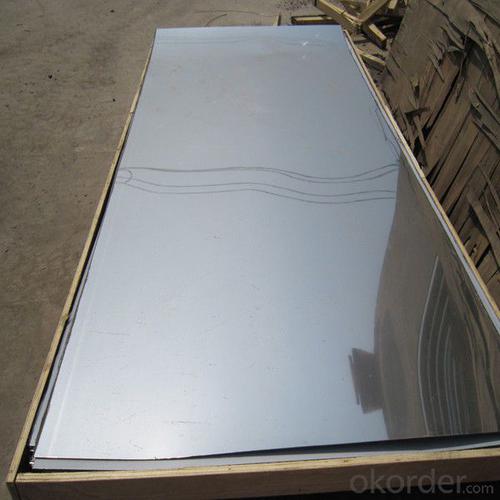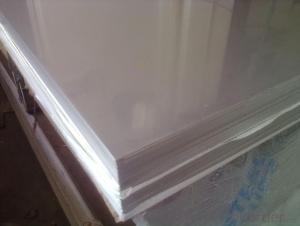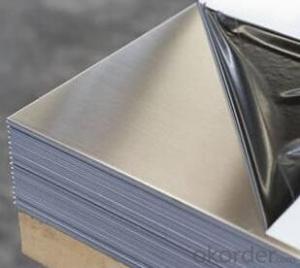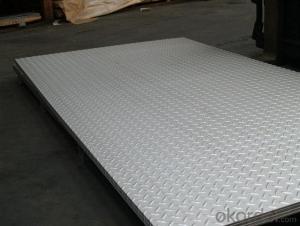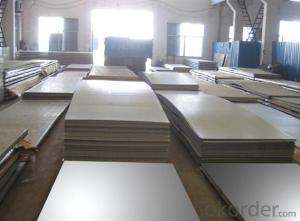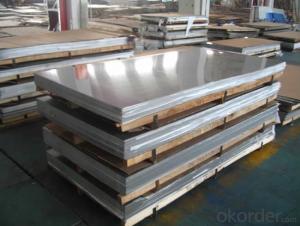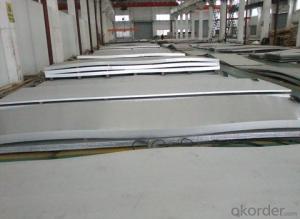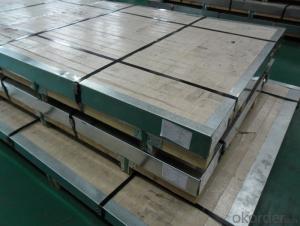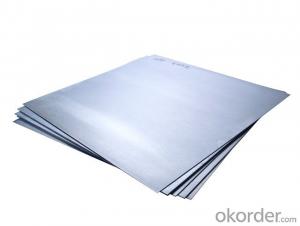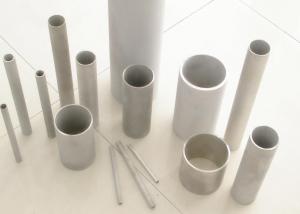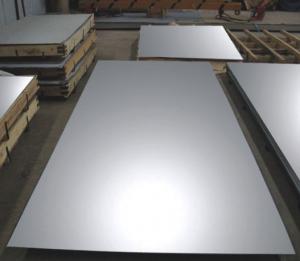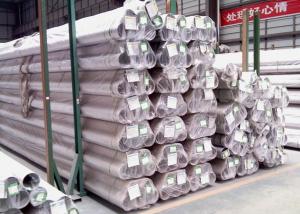Stainless Steel sheet 310S with No.4 Surface Treatment
- Loading Port:
- Shanghai
- Payment Terms:
- TT OR LC
- Min Order Qty:
- 500 m.t.
- Supply Capability:
- 5000000 m.t./month
OKorder Service Pledge
OKorder Financial Service
You Might Also Like
Hot sale stainless steel sheet 201/202/304/304l/310S/309S/316L/316Ti/316/321,410/420/430/444/443/409L, and 904L.
Description of Stainless Steel Sheet:
Description | steel sheet,hot rolled steel sheet,cold rolled steel sheet, steel sheet,sheet,steel plate |
Standard | ASME, ASTM, EN ,BS,GB,DIN, JIS etc |
Application | Steel sheet applies to construction field, ships building industry, petroleum & chemical industries, war and electricity industries, food processing and medical industry, boiler heat exchanger, machinery and hardware fields. |
Packaging | Standard export sea-worthy packing |
Delivery time | 10-30 days |
Quality | No.1 |
Productivity | 500 tons/Day |
Note | Our company has cooperative relation between the domestic agents. Stainless steel sheet can be made accordingto the customers requirements. Fasten delivery. Quality assured. |
Contacts | If you have any question,please feel free contact me. |
Stainless steel sheet surface finish characteristics
Surface finish | Characteristics and application |
2B | The surface brightness and flatness of no2B is better than no2D. then through a special surface treatment to improve its mechanical properties,No2B could nearly satisfy comprehensive uses. |
No.1 | Polished with abrasive belt of grit#100-#200, have better brightness with discontinuous coarse stria, used as inner and external ornaments for building, electrical appliances and kitchen utensils etc. |
No.4 | Polished with abrasive belt of grit #150-#180,have better brightness with discontinuous coarse stria, but thinner than No3, are used as bathtub buildings inner and external ornaments electrical appliances kitchen utensils and food processing equipment etc. |
HL | Polished with abrasive belt of grit #150-#320 on the NO.4 finish and has continuous streaks, mainly used as buildings ornaments elevators, door of building, frontal plate etc. |
BA | Cold rolled, bright annealed and skin-passed, the product have excellent brightness and good reflexivity like mirror, kitchen apparatus, ornament etc. |
8K | The product have excellent brightness and prefer reflexivity can to be the mirror. |
Main Features of stainless steel sheet :
•Escalator, Elevator, Doors
•Furniture
•Production tools, Kitchen appliances, freezers, cold rooms
•Auto Parts
•Machinery and Packaging
•Equipment and Medical devices
•Transport system
Product Details:
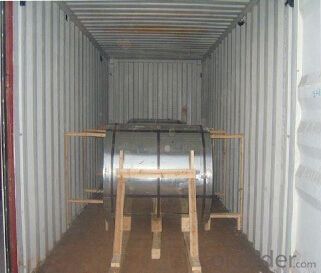
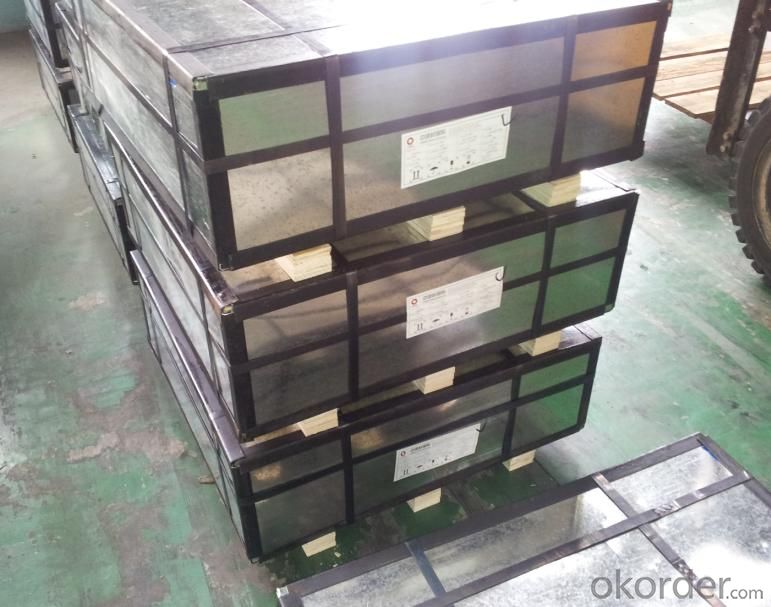
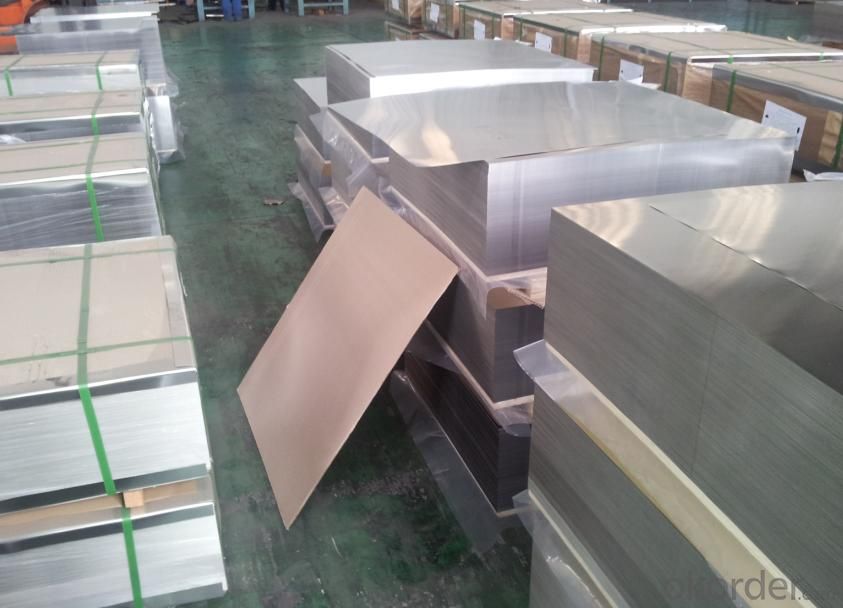
Sandard Seaworth Packing(wooden packing with water proof paper)
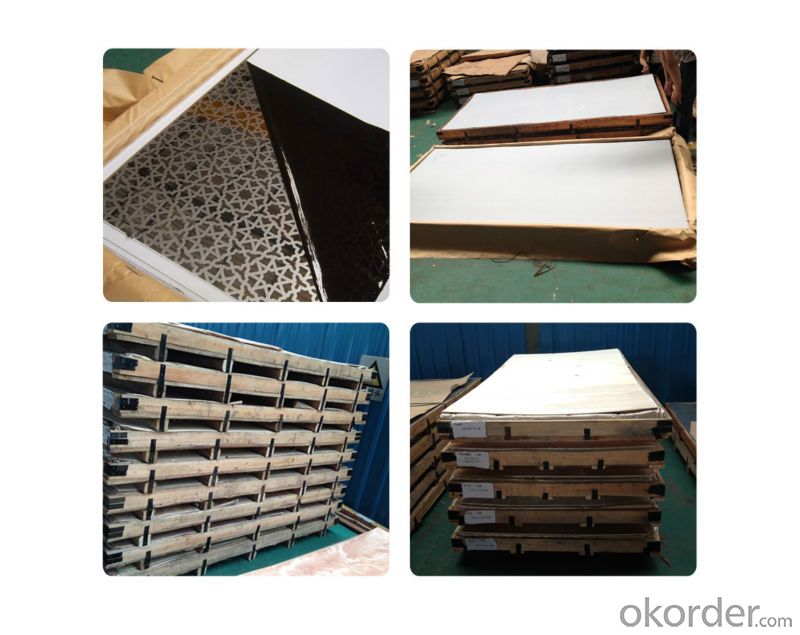
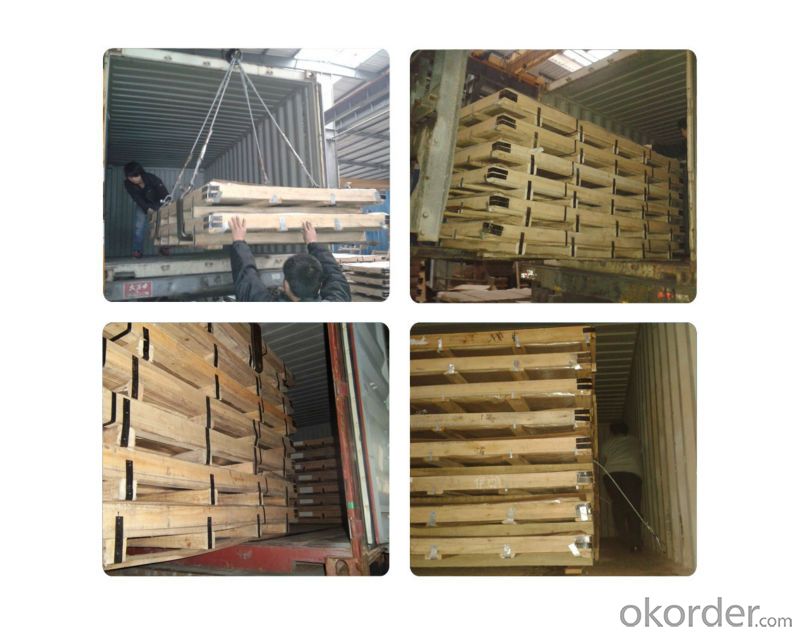
FAQ:
1. What's the quality?
very fine
2. How long get reply?
within 24 hours
If you have any question about stainless steel sheets,donot forget to sending the email to Us! You will get the competitive Price and have a very good experience about the Buying Process! CNBM International Corporation is always your trustful friend!
- Q: Are stainless steel sheets resistant to hydrochloric acid?
- Yes, stainless steel sheets are generally resistant to hydrochloric acid. Stainless steel is known for its high corrosion resistance, and it has been found to withstand a wide range of acids, including hydrochloric acid. However, the level of resistance can vary depending on the grade and composition of the stainless steel. In some cases, prolonged exposure to concentrated hydrochloric acid or high temperatures can cause corrosion or damage. Therefore, it is recommended to consult with a stainless steel specialist or refer to the specific stainless steel grade's corrosion resistance chart to determine the suitability of stainless steel sheets for a particular application involving hydrochloric acid.
- Q: What are the common types of corrosion that affect stainless steel sheets?
- The common types of corrosion that affect stainless steel sheets include pitting corrosion, crevice corrosion, stress corrosion cracking, and galvanic corrosion.
- Q: Are stainless steel sheets resistant to impact?
- Stainless steel sheets possess a general resistance to impact. Renowned for their robustness and durability, stainless steel is capable of enduring substantial force without deformation or fracture. This quality renders stainless steel sheets highly sought after in the construction, automotive, and aerospace sectors, where impact resistance is imperative. Moreover, the impact resistance of stainless steel sheets can be augmented by subjecting them to additional hardening or tempering processes, tailored to meet the precise demands of the application at hand.
- Q: What type of welding rod is used for 304 stainless steel plate welding?
- 304 stainless steel is the United States brand, equivalent to the domestic brand 06Cr19Ni10, usually with A102 or A107 welding rod.
- Q: Are stainless steel sheets resistant to scaling?
- Yes, stainless steel sheets are resistant to scaling. Scaling refers to the formation of oxide layers on the surface of a material when exposed to high temperatures. Stainless steel contains a high percentage of chromium, which forms a protective layer of chromium oxide on the surface when exposed to oxygen. This oxide layer acts as a barrier and prevents further oxidation or scaling of the stainless steel. Additionally, the presence of other alloying elements such as nickel and molybdenum further enhances the resistance of stainless steel sheets to scaling. Therefore, stainless steel sheets are highly resistant to scaling, making them suitable for applications in high-temperature environments.
- Q: Can stainless steel sheets be etched with designs?
- Indeed, designs can certainly be etched onto stainless steel sheets. Stainless steel, being a flexible material, offers the option of etching through different techniques like chemical etching or laser engraving. Chemical etching involves the application of a corrosive substance onto the stainless steel surface. This substance selectively eliminates the unprotected areas, leaving the desired design etched onto the sheet. On the other hand, laser engraving employs a high-powered laser beam to etch the design onto the stainless steel surface. Both methods yield intricate and detailed designs on stainless steel sheets, making it highly sought after for decorative and functional purposes in numerous industries.
- Q: What's the difference between stainless steel 304 and stainless steel 202?
- 202 stainless steel is one of the 200 series stainless steel, the national standard model is 1Cr18Mn8Ni5N. 200 series stainless steel is low nickel, high manganese stainless steel, nickel content, manganese content of about 8%, is a nickel type stainless steel.
- Q: Are stainless steel sheets resistant to nitric acid?
- Yes, stainless steel sheets are generally resistant to nitric acid. Nitric acid is a strong oxidizing agent that can corrode and dissolve many metals, but stainless steel contains a significant amount of chromium, which forms a protective oxide layer on the surface of the material. This oxide layer acts as a barrier, preventing the nitric acid from coming into direct contact with the stainless steel and thus providing resistance to corrosion. However, it is important to note that the resistance may vary depending on the grade and composition of the stainless steel, as well as the concentration and temperature of the nitric acid.
- Q: Are stainless steel sheets suitable for petrochemical refineries?
- Yes, stainless steel sheets are suitable for petrochemical refineries. Stainless steel is a highly corrosion-resistant material that can withstand harsh environments and extreme temperatures, making it ideal for use in petrochemical refineries. It offers superior resistance to chemicals, acids, and caustic materials commonly found in refining processes. Additionally, stainless steel sheets have excellent mechanical properties and can withstand high pressure and stress, ensuring durability and reliability in refinery operations. The non-porous surface of stainless steel also prevents the accumulation of bacteria and other contaminants, making it hygienic and easy to clean. Overall, stainless steel sheets are a preferred choice in petrochemical refineries due to their exceptional corrosion resistance, mechanical strength, and ease of maintenance.
- Q: What are the different types of stainless steel sheet finishes for sanitary applications?
- There are several different types of stainless steel sheet finishes that are commonly used for sanitary applications. These finishes are designed to provide a smooth and clean surface that is resistant to corrosion and bacteria growth. 1. #4 Brushed Finish: This is one of the most common finishes for stainless steel sheets used in sanitary applications. It has a brushed appearance that creates a uniform and consistent texture. It is easy to clean and maintain, making it ideal for environments where hygiene is crucial. 2. #8 Mirror Finish: This finish has a highly reflective surface that resembles a mirror. It is smooth and shiny, making it visually appealing and easy to clean. However, it is important to note that this finish may show scratches and fingerprints more easily than other finishes. 3. 2B Finish: This finish is often used for stainless steel sheets that will be further processed, such as in fabrication or welding. It has a dull and smooth appearance, providing a good base for additional treatments or coatings. 4. Satin Finish: Also known as a No. 4 finish, the satin finish has a low luster and a smooth texture. It is commonly used in sanitary applications where a clean and aesthetically pleasing surface is desired. 5. Bead Blast Finish: This finish is achieved by blasting the stainless steel sheet with fine glass beads. It creates a uniform, non-reflective surface that is easy to clean and resistant to corrosion. The bead blast finish is often used in food processing plants and pharmaceutical facilities. 6. Electropolished Finish: This finish involves an electrochemical process that removes a thin layer of the stainless steel surface, leaving behind a smooth and shiny appearance. It provides a high level of cleanliness and resistance to corrosion, making it suitable for sanitary applications in the pharmaceutical and biotech industries. It is important to consider the specific requirements of the sanitary application when choosing the appropriate stainless steel sheet finish. Factors such as corrosion resistance, ease of cleaning, and aesthetic appearance should be taken into consideration to ensure the best possible outcome.
Send your message to us
Stainless Steel sheet 310S with No.4 Surface Treatment
- Loading Port:
- Shanghai
- Payment Terms:
- TT OR LC
- Min Order Qty:
- 500 m.t.
- Supply Capability:
- 5000000 m.t./month
OKorder Service Pledge
OKorder Financial Service
Similar products
Hot products
Hot Searches
Related keywords
